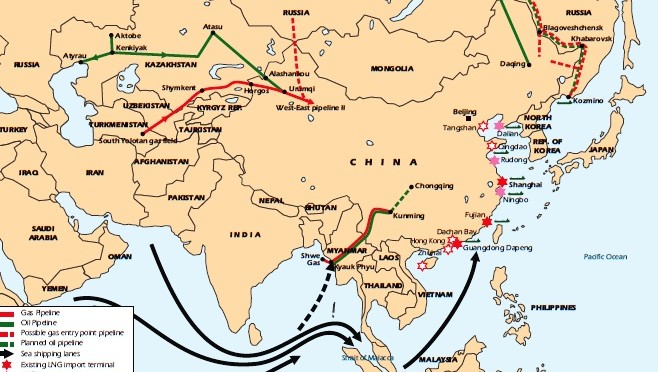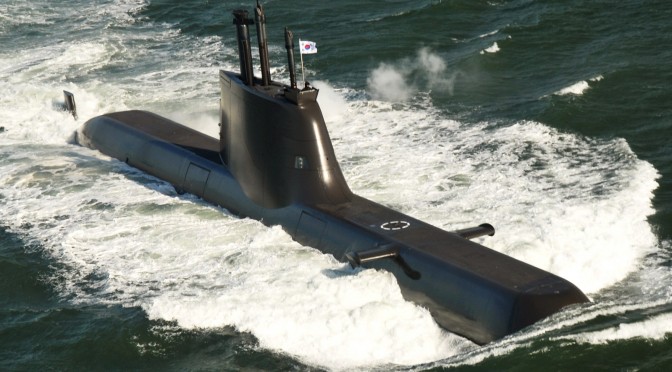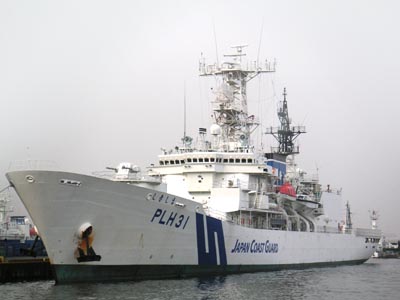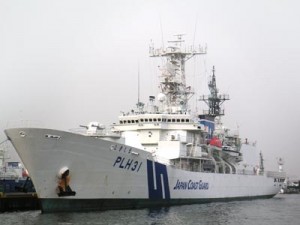A primer on concepts and their relationships
Five strategic architectures can be applied to U.S.-China confrontation. The nature of how each achieves “victory” differs, and they have unique strengths and weaknesses.
Inside Out is Air-Sea Battle elevated to a strategy despite self-stated limitations. It is the DoD’s current vector via the rapid victory requirement dictated in planning scenarios. In this strategy, the United States applies technological asymmetries to enable small, tailored forces to survive intensely defended approaches and strike vital PRC targets. This demands operations at the furthest limits of our own power projection while holding the enemy at risk in his most defensible zone. The risk of failure in this technological arms race is difficult to calculate as both sides depend on secretive “silver bullets.” Once an Inside Out fight begins, each side is likely to locally blind the other via space and cyber attacks, radically limiting control of combat forces and increasing the risk of miscalculation, stagnation, and inadvertent escalation. This is an unsettling prospect against a nuclear-armed superpower whose redlines are difficult to determine.
Outside In relies on a more classic “peel the onion” approach to dismantle the PRC’s “anti-access/area-denial” (A2/AD) capabilities, without exclusive dependence on penetrating forces attempting a technological coup de grâce. This approach targets Chinese power projection capability. As PRC forces disperse beyond their shore based A2/AD zone they diffuse and lose synergistic protection. This flips the long distances of the Pacific battle-space from an offensive liability to strategic depth. In addition, while the U.S. military has been exercising its global reach throughout the 20th century, the Chinese have yet to demonstrate commensurate expeditionary air and sea operations.
Hedgehog strategy builds regional allies who complicate the PRC’s hegemonic calculus. Enhancing the “spines” on the back of nations like Vietnam, the Philippines, Indonesia, Malaysia and Thailand can mitigate PRC aspirations in the South China Sea as it blunted Soviet expansion in Europe. Success looks like multi-lateral networks of lethally equipped partners who enable a favorable balance of power in phase 0. This checks China’s ability to intimidate Southern neighbors into its sphere of influence. Failure to invest in strong partnerships in Southeast Asia while reassuring existing alliances in Northeast Asia risks creating the perception of a “paper pivot” that boosts PRC regional clout.
Distant Interdiction exploits China’s massive dependence on foreign commodities. Called the “Malacca dilemma,” Pacific topography creates natural choke points beyond the reach of PRC power projection. U.S. Air, Naval and amphibious forces could selectively interdict vital commodities (especially oil) to break the PRC’s war making potential. This strategy can be executed with both lethal and non-lethal techniques, providing unique reversibility. Logistics interdiction is, by the Chinese own admission, one of their worst vulnerabilities.
Figure 1 Massive SLOC dependence for oil/LNG – most refineries on East Coast (credit http://noelmaurer.typepad.com/aab/2011/08/)
No-Man’s Sea exploits our own A2/AD capabilities to make Chinese home waters a mutual exclusion zone. The U.S. can pen-up both their military and merchant ships, forcing China to expend military capabilities on break-out operations to fetch vital supplies, while their merchant fleet sees the global market reconstitute without them. The loss of China will hurt the world market, but the loss of the world market could be catastrophic for the PRC.
Figure 2 Simultaneous application of A2/AD keeps the U.S. out, and the Chinese in (credit http://globalbalita.com/wp-content/uploads/2012/10/Air-Sea-Battle-map.jpg)
Inside Out appeals to our preferred ways of war, and exploits the defense industrial base’s promotion of war as a contest between hardware rather than strategies. While Inside Out is only exclusive from Outside In, the former demands so much new-tech investment that it may totally strangle resources required to orchestrate the other four. Hedgehog allows the U.S. to engage the PRC in phase 0, where they have thus far demonstrated significant strategic gains. While Outside In, Distant Interdiction and No-Man’s Sea obviously work together in phases 1-3, they do not attempt to promise Inside Out’s rapid victory. Instead, they forego technological tempo compression – rife with potential for unpleasant strategic surprise – and accept that any war with a superpower will be measured in months, not days.
The combined application of these stratagems amounts to a grand-strategic maneuver campaign, from the Sea of Japan to the Straits of Malacca. Seeing time and distance as assets rather than liabilities can allow the U.S. to pull apart and separately engage PRC diplomatic, economic and military COGs. Air-Sea Battle enabling technologies and operational concepts can be useful in multiple strategies, but the United States should trade force design that emphasizes an Inside Out military gambit for a force that enables a more robust gamut of strategic options.
Jeremy Renken is a Major in the U.S. Air Force. The opinions and views expressed in this post are his alone and are presented in his personal capacity. They do not necessarily represent the views of U.S. Department of Defense or U.S. Air Force.








